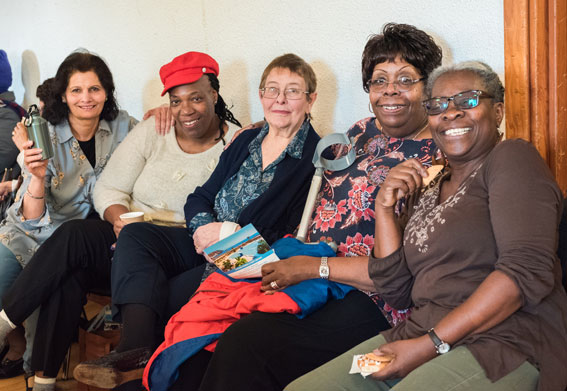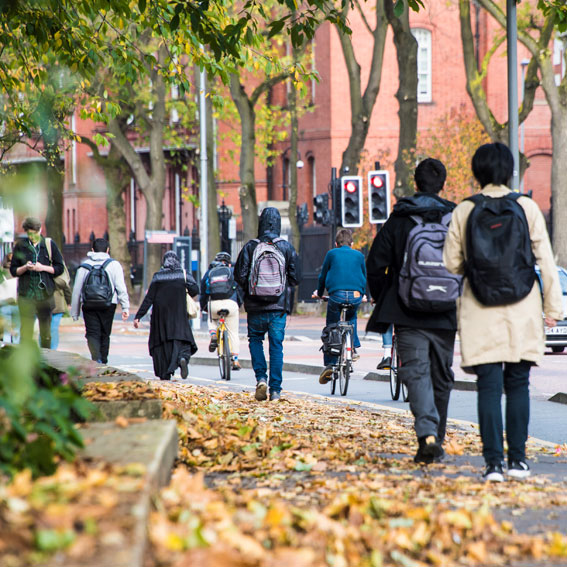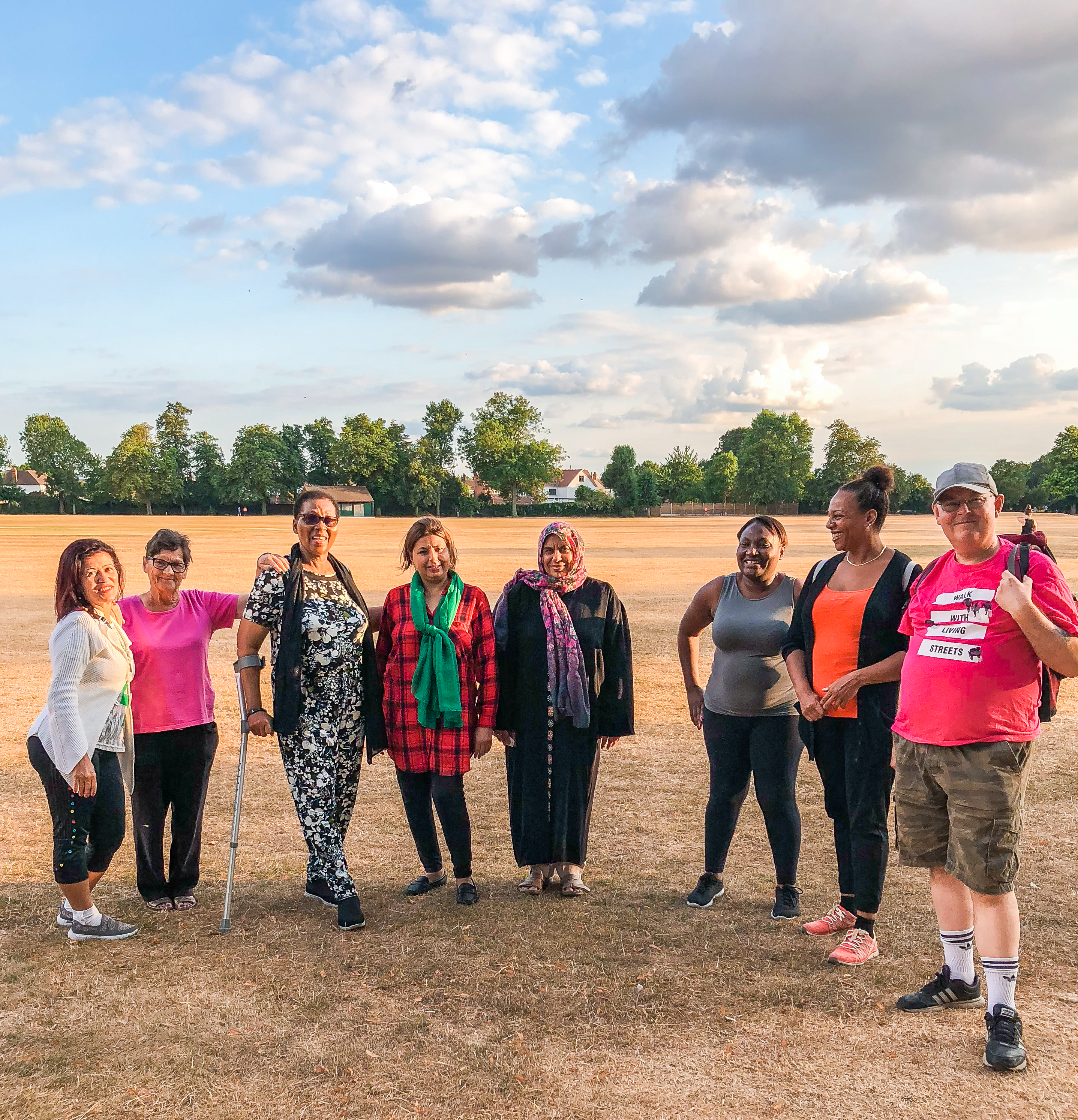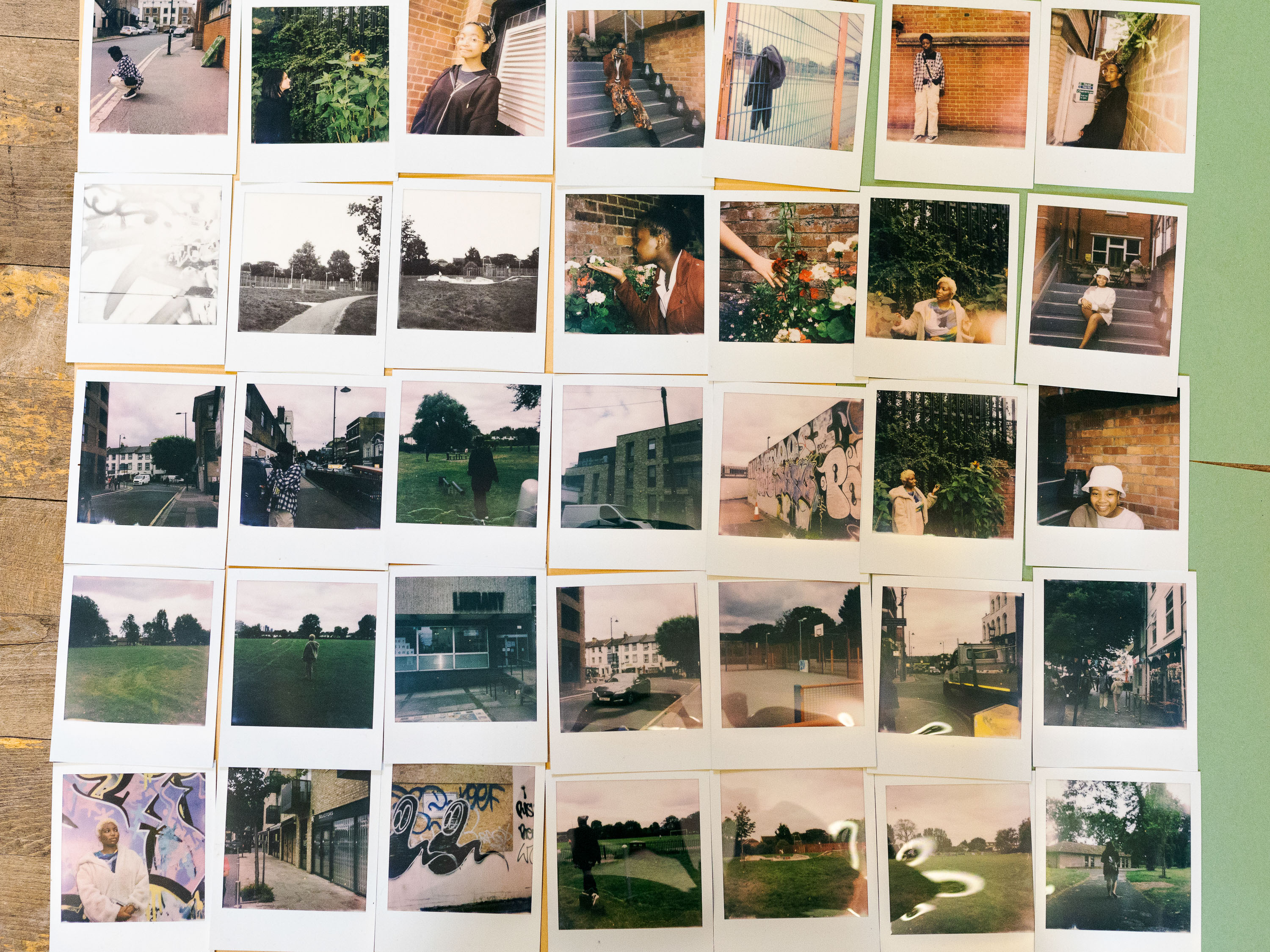BEING INCLUSIVE – HOW WE’RE LISTENING, ENGAGING AND RETHINKING
We want to make our streets more accessible and attractive for everyone, and that means making sure we’re an inclusive organisation.
To that end, we’ve begun reviewing and changing how we work. Our Engagement Manager Aisha Hannibal looks at how we are holding ourselves to account.
We are passionate about making big changes in our communities, and being a powerful voice for pedestrians. But we simply can’t say that if we are only hearing a limited range of voices.
We want to make sure that underrepresented voices are prioritised across our organisation.


Too often people of colour, disabled people, women, children and other marginalised people are excluded from designing and planning our public spaces. And it is often these groups who are most adversely affected by poorly designed streets.
We aim to be an inclusive organisation, but we know we still have work to do. Inequality won’t disappear without sustained efforts to challenge and eradicate it.
We need to make sure that we don’t systemically exclude people based on disability, gender and race.
In 2020 we published our intention to address the power imbalance and lack of representation within Living Streets. We could see how our ways of working have reinforced and sustained barriers to inclusion, and we set out our Commitment to Diversity. As our work on this has progressed, we’ve become more aware of the extent of what is needed.
BEING MORE INCLUSIVE - WHERE DO WE START?
To be inclusive, we need to collectively reimagine our work – and that includes our network of campaigners and local groups across the UK.
We need to ask whose voice is missing from our campaigns, whose voice is needed and whose voice is being heard at the moment. This vital process not only takes time, it means unlearning – putting aside preconceptions and past habits. We want to take time to listen, in a way that is rooted in humility, and followed up by action.
What are our communities really saying? Whose voices are underrepresented?
We also need a combination of immediate small changes and planning bigger strategic actions for the years ahead.
So we are building equitable partnerships with community groups and organisations to help us change our approach. Recently, alongside partner organisations, we organised training and hosted a number of digital events which prioritised accessibility, such as our Cut the Clutter campaign webinar. Creating a standard for making our events accessible, by working with British Sign Language interpreters, live subtitle captioning and giving audio descriptions - it is a good start.
But we want to do more.
BEING FLEXIBLE AND RESPONSIVE
People experience oppression in different ways. We know from speaking to those who feel marginalised that they don’t simply slot into simple homogenous groups.
We need to look at multiple factors, and how they combine to affect an individual. We need to recognise that people experience different forms of oppression which overlap. This doesn’t just exclude them in one way, but in many ways simultaneously.
By working with multifaceted communities and individuals , we hope to offer a more inclusive way for people to participate in our campaigns, and ensure that we’re not causing harm by being rigid in how we work with people.

Our key aims
As a first step, we are looking at our local group networks and how we can make them more inclusive. We want to do four key things:
1.
Build trust with communities and create a coalition of equitable partnerships. We will work with ‘affinity groups’ to help us support and engage people in a new way. These are groups which share common interests or identities such as race, gender or disability. By coming together they can lead the agenda, instead of fitting in with an approach that might not prioritise their needs.
2.
Change our processes and practices to co-create a culture of participation from minoritised and marginalised groups. We will work with those who are aware of their privilege and the benefits it affords them in their life and dismantle dynamics that are unhelpful and harmful.
3.
Redistribute the time and resource we put into supporting local groups. We’ll identify which areas need most support, by looking at where areas of high air pollution overlap with poorly designed roads and collision rates. We want to be transparent about how we use data, so that we are aware of any existing bias which lead to a singular path of understanding or reinforce negative conclusions.
4.
Reshape our approach to change, seeing the joy in this work. There is a lot to celebrate about embedding equity and justice into who we are and what we do. We want to make this a creative and inspiring process that has ripple effects throughout Living Streets.

What kind of an organisation do we want to be?
At Living Streets, we want to challenge - not replicate - oppression. To do this we need to be consistent and transparent. We believe that by becoming more accountable, we can accelerate the change we want to make. We want to co-develop a culture of openness, and to welcome criticism, even if it directs us to do things differently.
We know there is an issue with racial diversity within Living Streets, our campaign network and in the wider sector. We must address this to co-create a culture where marginalised voices are heard, and their needs are reflected.
We also know there is more to do to represent the voices and interests of disabled people. In our recent supporter survey, some of you asked us to share our platforms with disabled people, rather than either speak on their behalf or assume they feel included. This is something we’re working on.
As we head towards our 100-year anniversary as a charity, we want to come together around shared values and our shared commitment to make are streets more accessible and attractive for everyone.
We want to make sure that when we’re silent it’s because we’re listening. And when we’re talking it’s because we’re about to take action. It is vital for us to involve everyone, to create a better walking environment for all.
Thank you to our funders at the European Climate Foundation for giving us the ability to slow down and ask these questions, so that the answers are meaningful and bring lasting change.


About the author
Aisha Hannibal
Engagement Manager, Living Streets
[email protected]